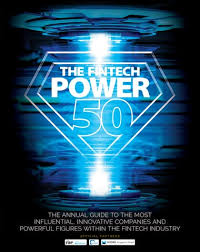101 Types of Emerging Fintech Shaping the Future of Finance in 2024
The financial technology (fintech) landscape is evolving at a breakneck pace, bringing with it a wave of innovations that are transforming how we interact with money. As we dive into 2024, let's explore 101 types of emerging fintech that are defining the future of finance.
1. Digital Banking
Digital-only banks are revolutionizing the banking experience, offering all services via mobile apps without physical branches.
2. Blockchain Technology
Blockchain ensures secure, transparent transactions, and underpins cryptocurrencies, smart contracts, and decentralized finance (DeFi).
3. Cryptocurrencies
Bitcoin, Ethereum, and an ever-growing list of altcoins are reshaping how we think about money and investment.
4. Decentralized Finance (DeFi)
DeFi platforms like Uniswap and Aave allow users to lend, borrow, and trade without intermediaries, democratizing financial services.
5. Peer-to-Peer Lending
Platforms such as LendingClub connect borrowers directly with investors, bypassing traditional banks.
6. Robo-Advisors
Automated investment platforms provide personalized financial advice and management with minimal human intervention.
7. Insurtech
Companies like Lemonade use AI to streamline insurance processes, from underwriting to claims.
8. Regtech
Regulatory technology helps financial institutions comply with regulations more efficiently through automation and analytics.
9. Mobile Payments
Apps like Venmo and Apple Pay make transferring money and paying for goods seamless and quick.
10. Biometric Security
Facial recognition, fingerprints, and other biometrics enhance security for financial transactions.
11. Artificial Intelligence
AI powers fraud detection, personalized banking experiences, and predictive analytics in finance.
12. Smart Contracts
Self-executing contracts on the blockchain facilitate trustless transactions and agreements.
13. Quantum Computing
Quantum computers have the potential to solve complex financial problems and optimize high-frequency trading.
14. Open Banking
APIs allow third-party developers to build services around financial institutions, fostering innovation and competition.
15. Financial Inclusion
Fintech solutions are providing access to banking services for unbanked and underbanked populations worldwide.
16. Digital Wallets
Wallets like PayPal and Google Wallet store users’ payment information securely, enabling quick online transactions.
17. Crowdfunding
Platforms like Kickstarter and GoFundMe enable entrepreneurs to raise funds from a large pool of small investors.
18. Personal Finance Apps
Apps like Mint and YNAB help users manage their finances, budget, and track spending.
19. Neobanks
Digital-first banks like Chime and N26 offer simplified banking services tailored for modern users.
20. Payment Gateways
Stripe and Square provide the infrastructure for online and in-person payment processing.
21. Micro-Investing
Apps like Acorns allow users to invest spare change from everyday purchases into diversified portfolios.
22. Cryptocurrency Wallets
Secure wallets like MetaMask store digital currencies and facilitate blockchain transactions.
23. Tokenization
Assets like real estate and art are being tokenized, allowing fractional ownership and easier trade.
24. Embedded Finance
Financial services integrated into non-financial platforms, like lending in e-commerce checkout processes.
25. Voice Banking
AI-powered voice assistants facilitate banking transactions and customer service via spoken commands.
26. Real-Time Payments
Systems like FedNow enable instant settlement of transactions, improving liquidity and cash flow.
27. Digital Identity Verification
Services like Jumio provide secure, instant identity verification for online transactions.
28. Green Finance
Fintechs are developing solutions to invest in sustainable projects and carbon credits.
29. Algorithmic Trading
Automated trading systems use complex algorithms to execute trades at optimal speeds and prices.
30. Buy Now, Pay Later (BNPL)
Services like Klarna and Afterpay allow consumers to purchase goods and pay in installments without traditional credit checks.
31. Cybersecurity Solutions
Advanced security technologies protect financial data from cyber threats and breaches.
32. AI-Powered Underwriting
Machine learning models improve the accuracy and speed of underwriting loans and insurance.
33. Credit Scoring Innovations
Alternative data sources and AI provide more inclusive and accurate credit scoring.
34. Financial Literacy Platforms
Interactive platforms educate users on managing money, investing, and financial planning.
35. Autonomous Finance
AI-driven systems autonomously manage finances, from bill payments to investment rebalancing.
36. Regulatory Sandboxes
Regulators create environments where fintech innovations can be tested under relaxed regulations.
37. Ethical Fintech
Companies focus on transparency, fairness, and sustainability in their financial products.
38. Predictive Analytics
Advanced data analysis predicts market trends, helping businesses and investors make informed decisions.
39. Smart ATMs
Next-gen ATMs offer services beyond cash withdrawal, such as account management and digital transactions.
40. Fintech-as-a-Service (FaaS)
Platforms provide financial services infrastructure for startups to build their own fintech solutions.
41. Contactless Payments
NFC technology enables quick, secure payments with a tap of a card or smartphone.
42. Expense Management Tools
Apps like Expensify simplify tracking and reporting business expenses.
43. Supply Chain Finance
Fintechs facilitate financing solutions that optimize cash flow within supply chains.
44. Virtual Cards
Digital-only cards provide a secure and convenient alternative to physical credit/debit cards.
45. Debt Collection Innovations
Automated, ethical approaches to debt collection improve recovery rates and customer relations.
46. AI Chatbots
Virtual assistants handle customer inquiries, improving service efficiency in financial institutions.
47. Financial Marketplaces
Platforms aggregate various financial products, allowing users to compare and select the best options.
48. Remittance Services
Companies like TransferWise (Wise) reduce the cost and time of sending money internationally.
49. Fractional Ownership
Investors can buy fractions of high-value assets, like property or art, through fintech platforms.
50. Digital Invoicing
Automated invoicing systems streamline billing processes for businesses.
51. AI-Powered Risk Management
AI tools assess and mitigate financial risks with greater precision.
52. Invoice Financing
Fintech platforms provide businesses with immediate cash by financing their unpaid invoices.
53. Community Banking
Digital platforms facilitate community-based lending and savings models.
54. Payment Splitting Apps
Apps like Splitwise help users divide and manage shared expenses seamlessly.
55. Fintech for Gig Economy
Solutions cater to freelancers and gig workers with tailored banking and financial services.
56. Crowdsourced Insurance
Insurance models where policyholders contribute to a pool that covers losses collectively.
57. Regulatory Compliance Automation
Software automates compliance with financial regulations, reducing manual workload and errors.
58. Identity Theft Protection
Advanced tools and services monitor and protect against identity theft and fraud.
59. AI-Driven Customer Insights
Data analytics provide deep insights into customer behavior and preferences.
60. Property Tech (PropTech)
Fintech solutions optimize real estate transactions, management, and investments.
61. Financial APIs
APIs enable seamless integration of financial services into various platforms and applications.
62. Digital Loans
Fully online loan applications and disbursements streamline borrowing processes.
63. Blockchain Voting
Secure, transparent voting systems leveraging blockchain for shareholder meetings and governance.
64. Lifestyle Banking
Banks offering tailored services and products that integrate into customers’ daily lives.
65. Financial Wellness Programs
Programs that help employees manage their finances, reduce stress, and improve productivity.
66. Neurofinance
Understanding the neurological basis of financial decision-making to improve investment strategies.
67. Collaborative Finance
Peer-to-peer platforms where users collaborate on financial goals, like savings pools or joint investments.
68. Trade Finance
Digital solutions simplify and secure international trade transactions and financing.
69. Social Trading Platforms
Platforms like eToro where users can follow and copy the trades of successful investors.
70. Digital Tax Solutions
Automated tax preparation and filing services for individuals and businesses.
71. Virtual Branches
Banks offering virtual customer service and account management through VR/AR.
72. Crypto Debit Cards
Cards that allow users to spend cryptocurrency at traditional merchants seamlessly.
73. Regulatory Reporting Solutions
Automated tools for generating and submitting regulatory reports.
74. Multi-Currency Accounts
Accounts that hold multiple currencies, simplifying international transactions.
75. Fintech for Education
Platforms that offer student loans, financial literacy programs, and budgeting tools for students.
76. Decentralized Exchanges (DEX)
Platforms like Uniswap allow users to trade cryptocurrencies directly without intermediaries.
77. Credit Repair Solutions
Services that help individuals improve their credit scores through tailored strategies.
78. Robo-Underwriting
Automated systems for evaluating loan and insurance applications.
79. Blockchain-Based Auditing
Immutable ledgers provide transparent, tamper-proof records for auditing purposes.
80. Financial Data Aggregation
Tools that consolidate financial data from various sources for a comprehensive overview.
81. Crypto Lending
Platforms that allow users to lend and borrow cryptocurrencies.
82. Predictive Financial Modeling
AI models predict financial outcomes and trends to inform strategic decisions.
83. AI in Wealth Management
AI tools provide personalized investment advice and portfolio management.
84. Cross-Border E-Commerce Solutions
Fintech services streamline international online sales and payment processing.
85. Digital Asset Management
Platforms for managing digital assets like cryptocurrencies, NFTs, and tokenized assets.
86. AI-Powered Fraud Detection
Advanced algorithms detect and prevent fraudulent activities in real-time.
87. PensionTech
Solutions that enhance pension management and planning for individuals and institutions.
88. Ethical Investing Platforms
Platforms that help users invest in socially responsible and sustainable companies.
89. AI-Driven Trading Bots
Automated bots that execute trades based on predefined strategies and market conditions.
90. Fintech for SMBs
Solutions tailored to the unique financial needs of small and medium-sized businesses.
91. Blockchain for Supply Chain
Using blockchain to ensure transparency and traceability in supply chain finance.
92. Personalized Banking
Banks offering highly personalized services and products based on customer data.
93. AI-Enhanced Customer Support
AI tools that provide instant, accurate responses to customer queries and issues.
94. Digital Trade Platforms
Platforms that facilitate and finance international trade digitally.
95. Predictive Loan Default Models
AI models that predict loan default risks to improve lending decisions.
96. Tokenized Securities
Traditional securities like stocks and bonds represented as digital tokens on the blockchain.
97. Smart Financial Contracts
Contracts that automatically execute financial transactions based on pre-set conditions.
98. Global Remittance Networks
Fintech solutions that provide low-cost, high-speed international money transfers.
99. Digital Financial Advisors
AI-driven platforms that provide tailored financial advice and planning.
100. Blockchain for Identity Verification
Secure, decentralized solutions for verifying identity in financial transactions.
101. Hyper-Personalization in Finance
Leveraging big data and AI to offer highly personalized financial services and products.
Conclusion
The fintech revolution is not just about technology; it's about rethinking finance itself. These 101 types of emerging fintech are paving the way for a more inclusive, efficient, and innovative financial future in 2024 and beyond. As these technologies continue to evolve, they promise to reshape every facet of our financial lives, making finance more accessible, transparent, and user-friendly. Embracing these innovations will be crucial for individuals, businesses, and institutions aiming to stay ahead in the ever-changing financial landscape.
Thank you



.png)
.jfif)
.jfif)
.jfif)
.png)
.jfif)


.jpg)